Denizens of Autumn
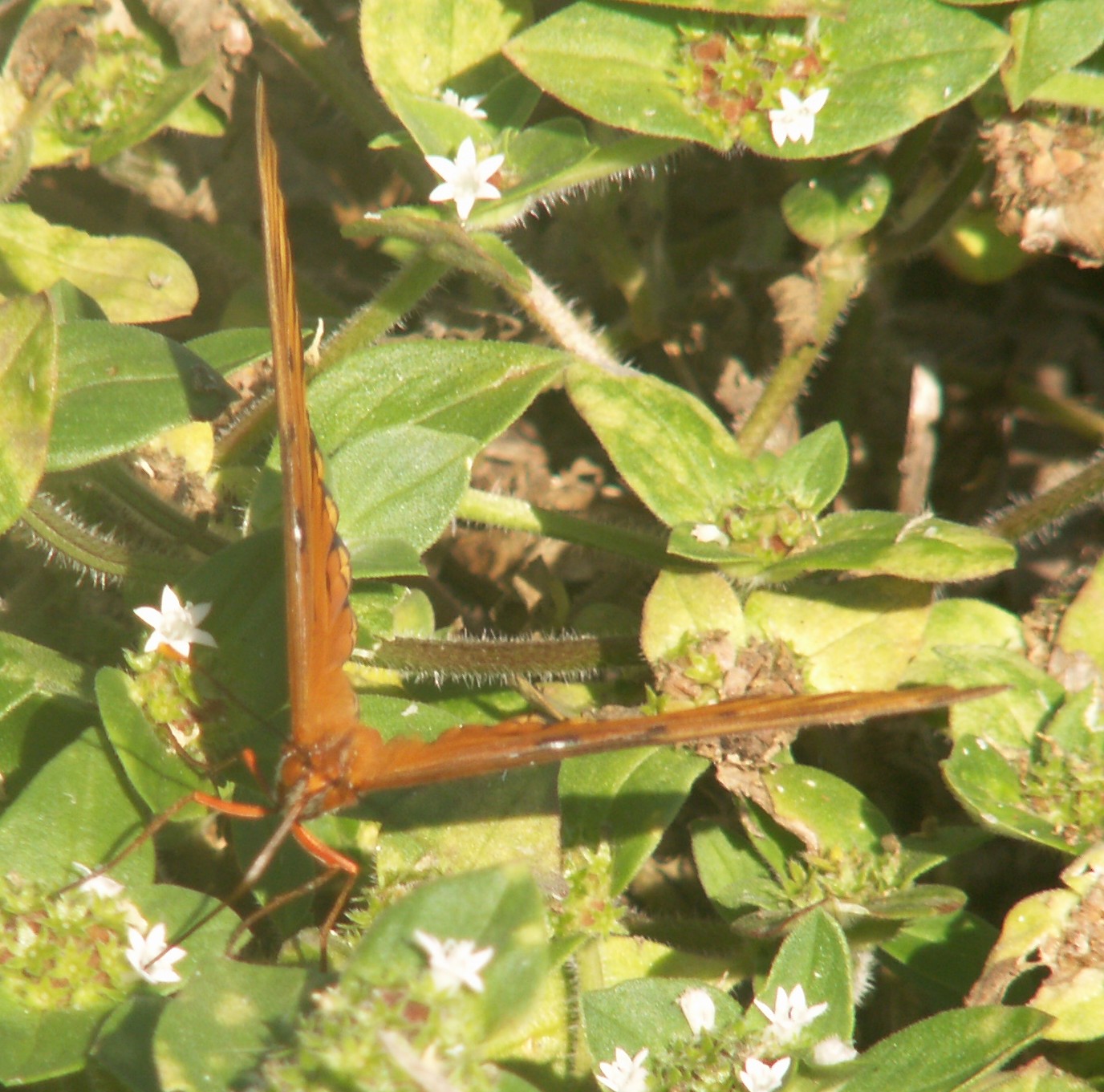
Click here for the large view.
It's official: Gulf Fritillaries love the white, six-petaled pusley that folks who don't know any better call a weed. This morning I saw seven of the butterflies in the area near our front door. I have no idea how many flitted over the rest of the yard.
(Edited from initial post: Video added in permalink.)
I told Mary, "They have a special migration song, you know. It's kind of like a hiking song. If you listen closely you can hear it really well."
I actually had her going for a moment. She wondered if it was something my camera had picked up while I was taking a video (yet to be uploaded). I demonstrated by singing in a high, tiny voice:
It's a long way to go....
(to the tune of "It's a Long Way to Tipperary")....
Then she asked if they really migrated -- which they do, according to Floridata.com. According to Bugguide.Net,this species frequents the south but occasionally strays northward. Agraulis vanillae, Family Nymphalidae (Brushfooted Butterflies), Subfamily Heliconiinae (Heliconians and Fritillaries).
Right now these butterflies are everywhere in our area -- and they love our yard.
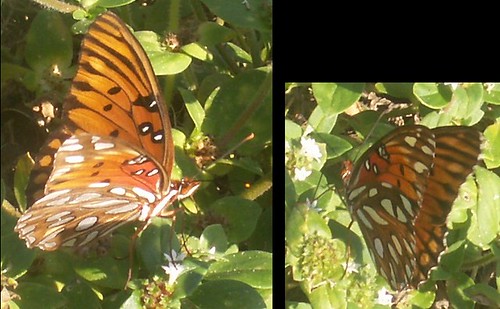
Video: Gulf Fritillaries (3:05)
Signs of seasonal change are all around. Our evening walks have been cooler. The Fritillaries take their turn in the parade of local wildlife, along with the turkey vultures who have begun their return to the skies. And likely to the streets for a meal -- the young squirrels are out, and the possums. I recently got my first-ever in-person view of an armadillo, but it was an ex-armadillo broken by the side of the road. Our lows dip below 70 degrees and our highs begin to shy away from 90. During a recent spate of glorious weather the humidity dropped, making 90 degrees feel like 88. Truly a treat -- not long ago the heat indices were in the triple digits.
Before we took our walk on October 1 I set my tripod up in the driveway and got in a Moon shot:
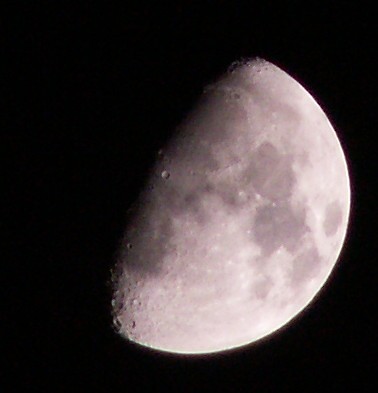
Photographed at 9:33 PM (EDT), with a 1/160-second exposure at f/4.5. The Moon here is nine days old.
On our way back home we swung by a relatively new apartment complex, whose lit sign provided a hangout for several types of bugs, including the cousin of a childhood friend. I wrote the passage below several years ago.
I am at first surprised by the pinpricks it leaves on my skin, as it makes its way up my arm slowly. Majestically.
We are by the Rose of Sharon tree in the back yard, by violets and tiger lilies. Summer is warm and sweet, and I have recently learned to write my name with 4th of July sparklers, my identity glowing before me in the nighttime air.
The sparklers are not yet outlawed, the mantises not yet gone.
This praying mantis is friend, companion. It trusts my large form enough to rest on my arm. I trust it not to be too bug-like. In other words, not to frighten me.
And, in fact, it moves too slowly on me to inspire fear. Instead I am awe-struck by its beauty, honored by its confidence as it takes its measured, regal steps from the Rose of Sharon onto the flesh that I've rested beside the branch. Its vibrant green body, kelly bright in the sun. Its small triangular head with large, wise eyes. The mild, prickly feeling left on me by its long, dancer's legs.
It remains nameless through the years of our ritual, is only the praying mantis. I do not know, or care, whether it is always the same one who keeps me company in the back yard during the summer. The only thing that matters is that we share a private, intimate time and space.
Carole, my friend down the street and four years my senior, has taught me about Rose of Sharon nectar. I feed like a bee on the flowers, share with the mantis the secrets of our tree. Together we engage in magic. I cannot hope to absorb its wisdom, or its grace -- can only bask in its attitude of prayer, in its unmistakable touch.
It will vanish about the same time as the fireflies, whose ethereal lights I chase. Pretty lights, more decorative than sacred in my child's lexicon. Like saints, the fireflies will achieve their sanctity only after they are gone.
My mother explains it to me as we sit on the front step: that the praying mantis has become rare enough that it is now illegal to kill one. She does not mention pesticides, DDT. All I know is that the absence of my small, majestic friend leaves an ache in my chest that to this day remains.
As I pedal down a bike path decades later, near dusk, a light flashes from within shadowed brush. It is the first firefly that I have seen in 20 years, perhaps more. One, where before I had seen dozens in a small, urban yard, flitting amidst the lilies, roses, hyacinth, in the summers of the mantis.
With reverence and sorrow, I give thanks that something has survived. And remember the light, prickly pinch on my arm, as if to awaken me from a dream -- the embrace of an old, dear friend, whose disappearance remained a mystery until I was aware enough to know.
I'd written the above while I still lived in Massachusetts. I hadn't seen any mantises there, but I have seen them down here. Each time I do, they give me a thrill.
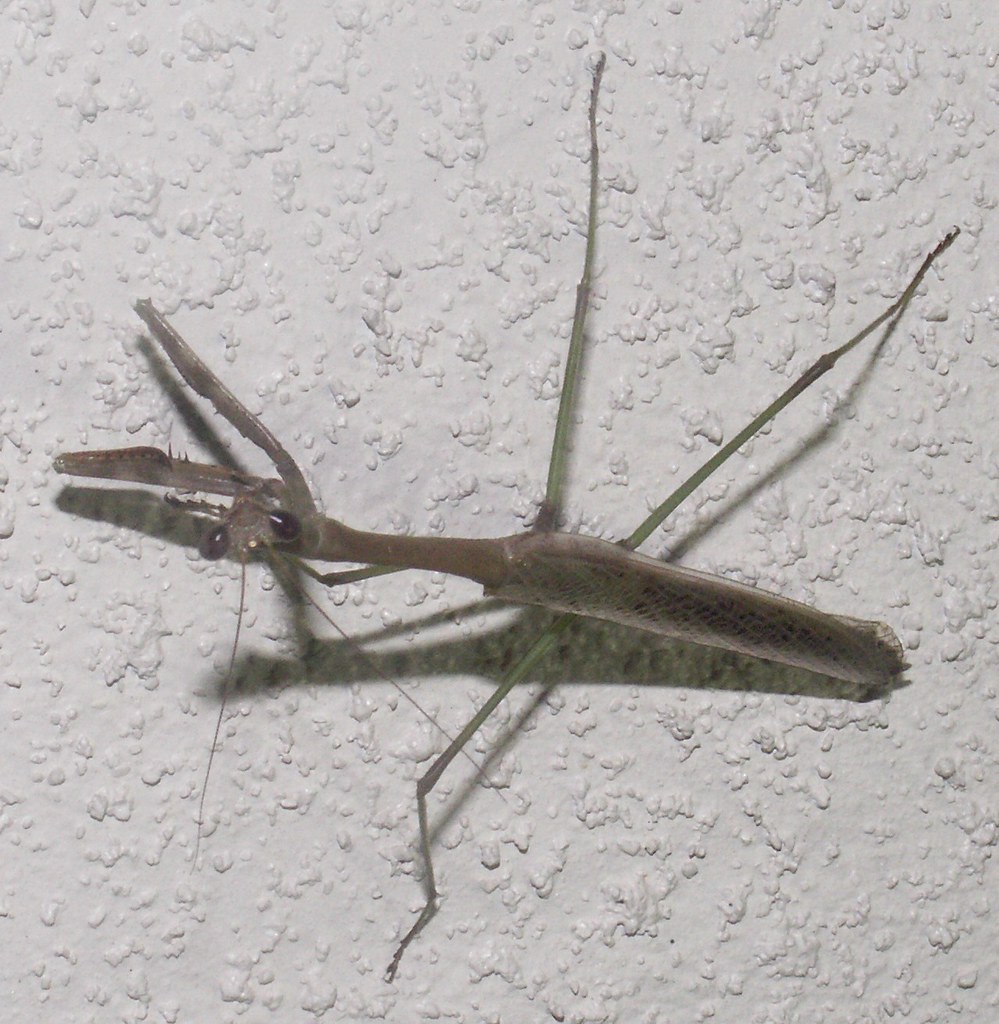
I think this is a male Carolina Mantis. Stagmomantis carolina, Family Mantidae. According to Bugguide.Net, this mantis ranges Virginia to Florida, west to Mexico and California, northeast to Indiana, and is the state insect of South Carolina. Feeds on "butterflies, moths, flies, small wasps and bees, true bugs and caterpillars. Often considered beneficial, mantids will eat just anything they can catch and therefore do not differentiate whether their meal is beneficial to man or not. Eggs overwinter and hatch in early spring. Adults are mature by late summer and usually die by winter, however there have been cases of them living longer in Florida (Price 1984, Prete et al. 1999)."
Near the mantis was a Velvetbean Caterpillar Moth.
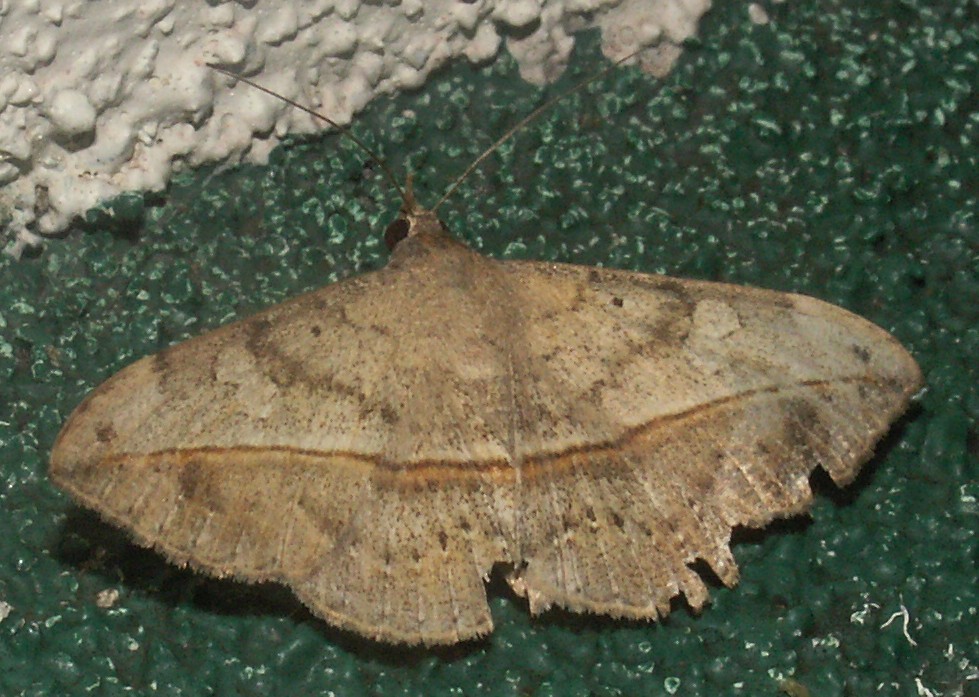
Anticarsia gemmatalis. Ranges through much of North America September through November. "Variable, wings heavily mottled or mostly unmarked with weak stripe and prominent spots," says Bugguide.
I squeezed off a few shots in front of our local library on October 2, before our monthly camera club meeting.

Beach Sunflower. Helianthus debilis, Family Compositae/Asteraceae (daisy/aster). Two subspecies exist. This one is probably H. debilis subsp. cucumerifolius (Cucumber-leaf sunflower), which "is erect and occurs along the northern Gulf Coast of Florida, west to Texas, and inland, especially in disturbed sites," according to Floridata.com.

American Beautyberry. Callicarpa americana, Family Verbenaceae (verbena or vervain). Also called French mulberry. Says Floridata, "American beautyberry occurs naturally from Maryland, south to Florida, and southwesterly into Tennessee, Arkansas, and Texas. It also grows in Mexico, Bermuda, the Bahamas and Cuba. It inhabits relatively open, well drained, rich woodlands and dry hammocks."
Floridata adds, "The colorful berries last long into winter and are eaten by a variety of birds. They don't seem to be the most delicious food source around, though; at my place in North Florida they tend not to be eaten until late winter when they are all shriveled into beautyberry raisins!"
Now That's What I Call Perigee!
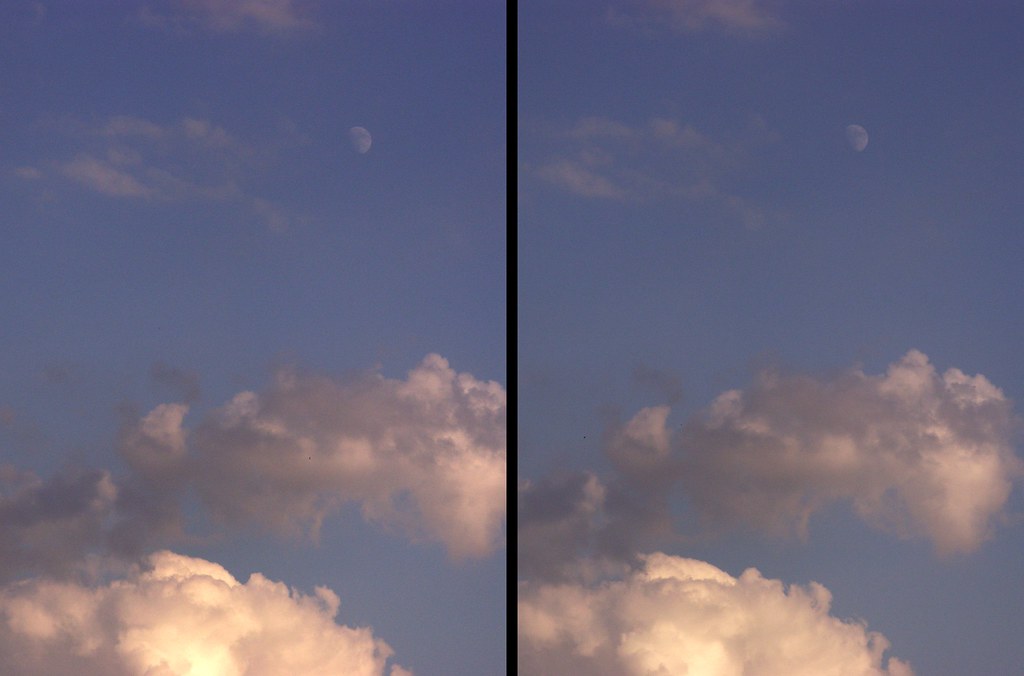
I didn't mean for this to be a stereogram, but when I looked at these shots side by side I liked the effect -- especially since the Moon seems to be floating closer than some of the clouds. Actual perigee (the Moon's closest approach to the Earth) doesn't occur until Friday. View with eyes crossed, relaxing your gaze as you focus on the "center" image.
I've finished drafting the next-to-last chapter in Book #4, but am working on tweaking and some backfill before I move on to the denouement. I've also been "reading for craft" as part of gearing up for the redrafting process.











2 Comments:
The magic in the centre of this rich post, even woven with grief, is wonderful, liberating. Thank you...
You have been busy with the buzz of life all around from the highest place in the sky down to the ground and what creeps there!
Post a Comment
<< Home